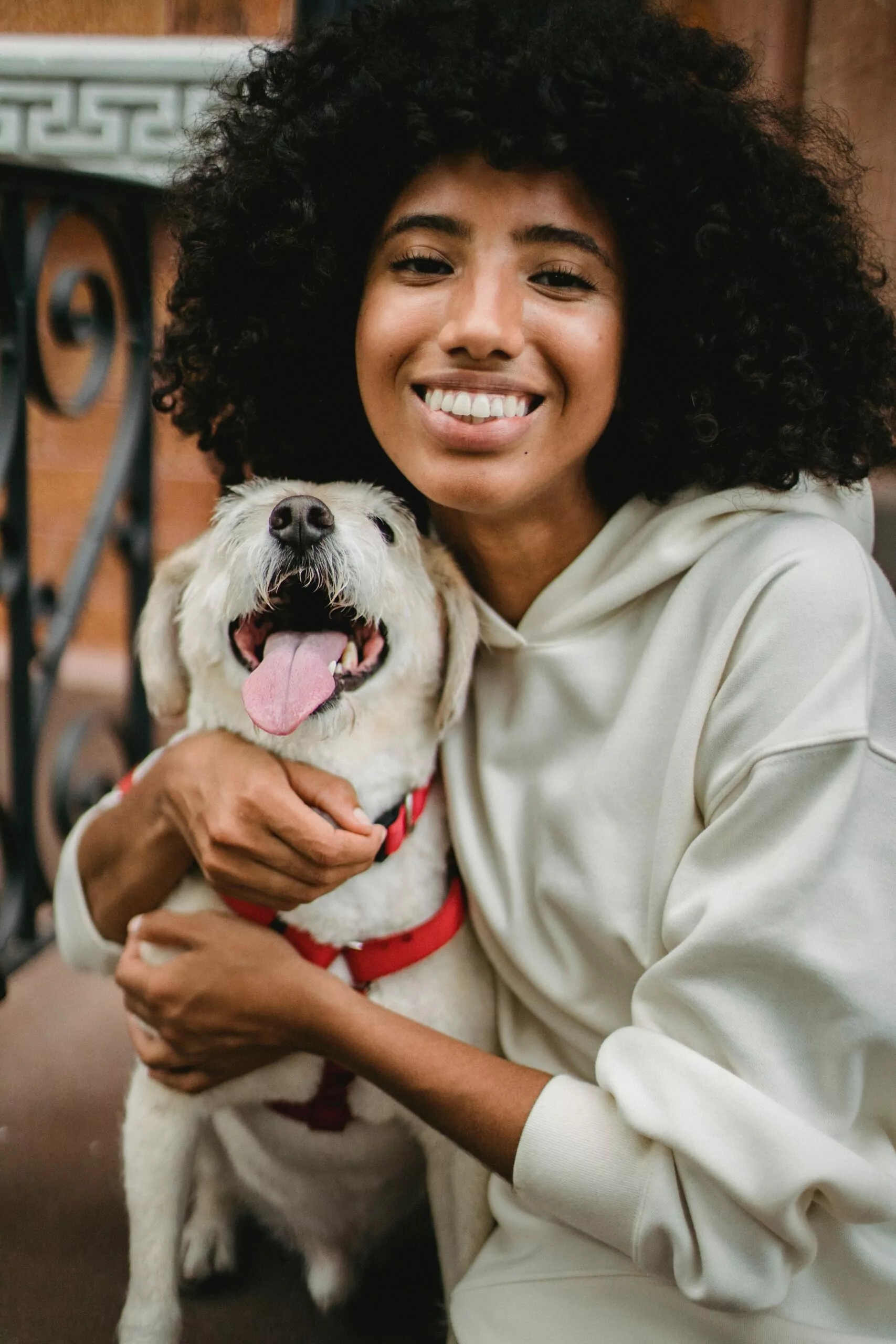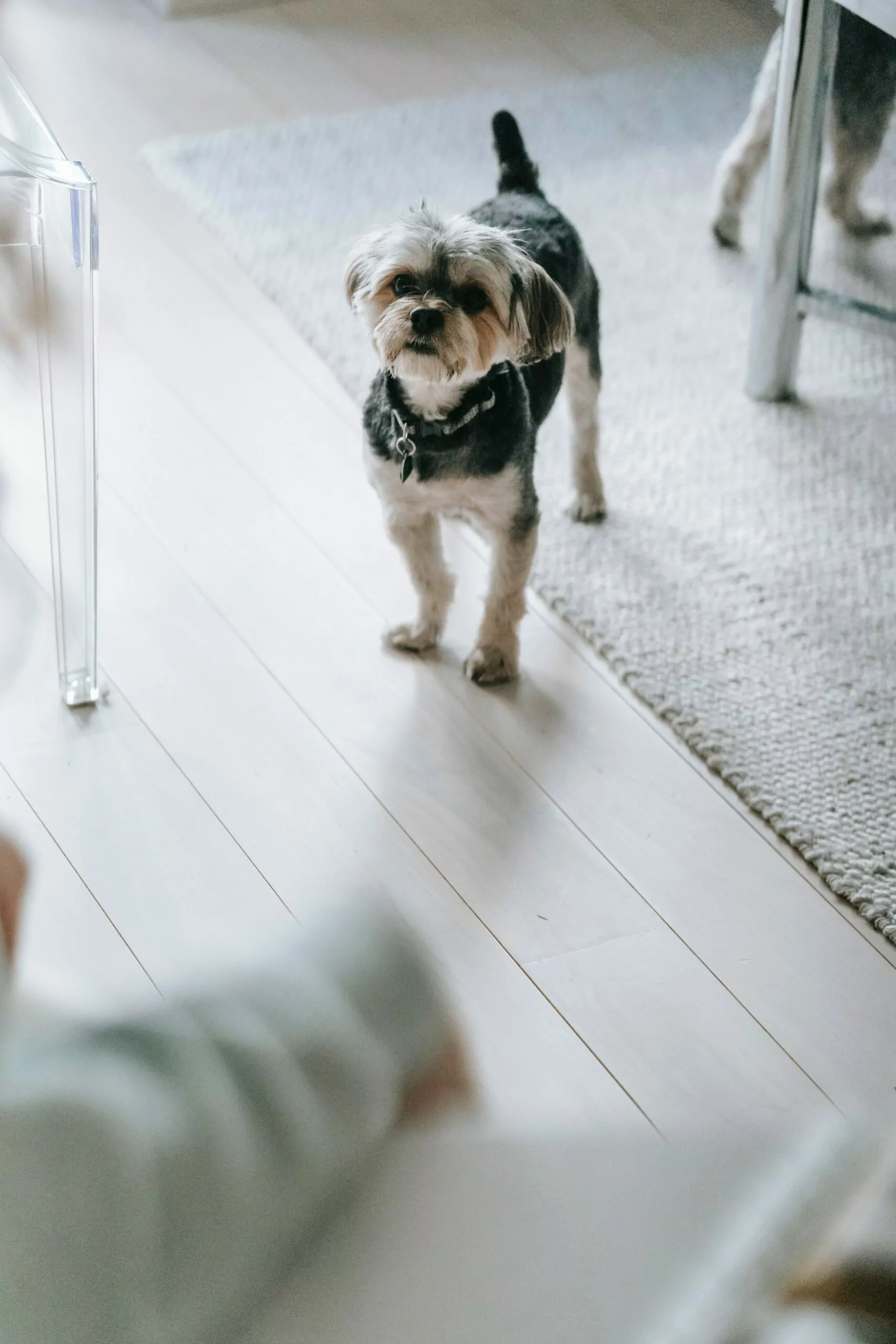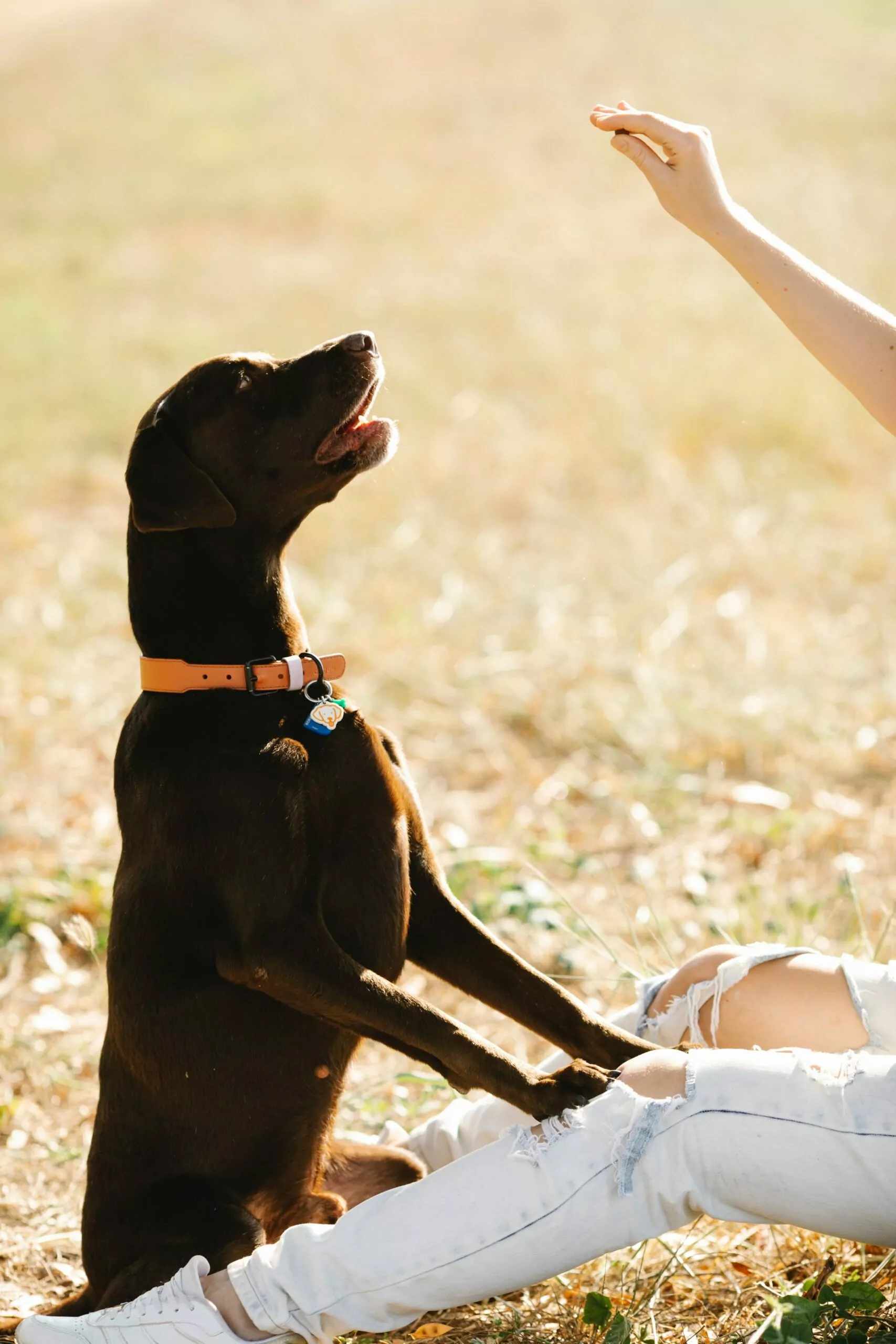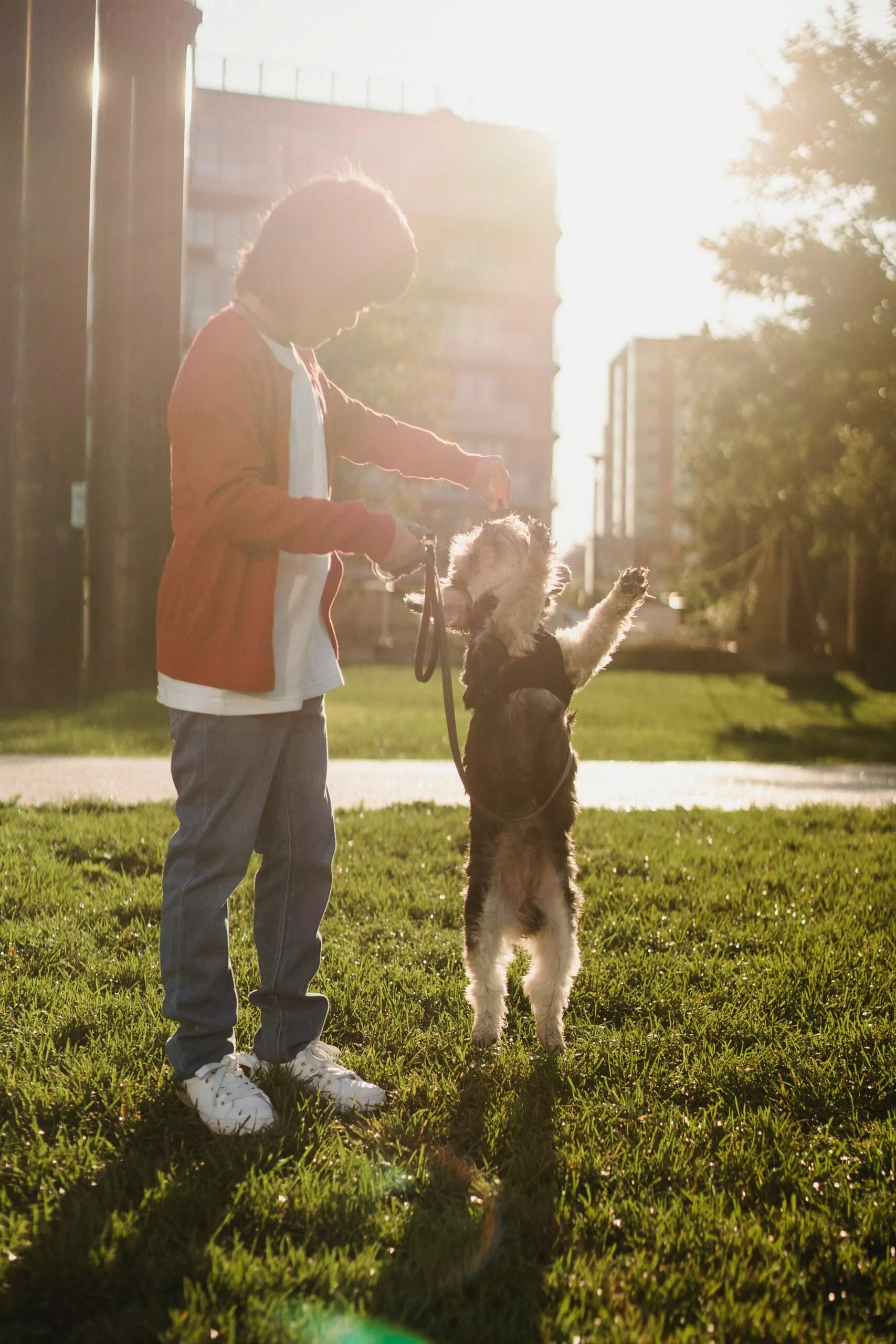Looking for ways how to leash train a dog? Are you walking the dog, or is the dog walking you? LOLS! Walking on a leash doesn’t come naturally to dogs; it’s a learned skill. Discover how to train a dog to walk on a leash without being dragged down the street.
Remember to start early and in an indoor quiet space to prevent distractions. Never yank on the leash, as this can cause injury to your pup. Following the step-by-step instructions, you can look forward to many pleasurable dog walks and a pup obeying commands.
You can aid dog on-leash training and enjoy outdoor walks together with consistency and patience.
What You Need for Walking a Dog on a Leash?

- Patience: Training a puppy or dog to walk on a leash requires patience. It takes time for them to adjust and learn to the new routine.
- Collar/harness: We recommended using a harness as a safer option than a dog collar, which can cause discomfort or injury to the dog’s neck.
- Leash: A leash between four to six feet in length is recommended to provide enough space for the dog to walk and explore while keeping them close enough to maintain control.
- Healthy dog treats: We highly recommend using small, age- and breed-appropriate treats to reward good behavior and motivate the dog during training.
Pro Tip: When leash training a puppy, the dog training treats can serve as a meal (motivation), but the dog should not be distracted by chewing, losing focus on the training. Therefore, ensure the treats are small.
Step-by-Step Instructions for Teaching a Dog to Walk on a Leash
Introducing the Puppy to a Collar and Leash
Start With Off-Leash Training
Off-leash training is an essential first step in leash training your puppy. Leash training can be compared to seatbelt training. Just like a seatbelt, a leash should only be used when necessary. Your puppy should learn to act on your commands and not rely on the leash.
Start by training your puppy indoors, where there are minimal distractions.
Train Indoors in Bursts for Two Minutes Per Session
You can do dog training in bursts of two-minute sessions. This is to avoid overwhelming your puppy and to keep training sessions enjoyable. Start training in one room before moving to other parts of the house.
Gradually increase the duration of each training session as your puppy improves.
Use a Confined Area
Using a confined area for training can help your puppy focus and reduce distractions. Choose a room with few distractions, and limit your puppy’s movements by using a dog gate or a playpen.
This will help your puppy associate the training with a specific area and help them learn faster.
Introduce Collar/Harness and Leash Once Off-Leash Training is Mastered
Once your puppy has mastered off-leash training, you can introduce the collar/harness and leash. Start by placing the collar/harness on your puppy and letting them wear it for short periods.
Gradually increase the duration of wearing the collar/harness before attaching the leash.
Use Treats for Stubborn Puppies
Some puppies may be stubborn and resistant to leash training. If your puppy is stubborn, try breaking the training process into three parts, using treats as positive reinforcement. First, hold the harness up to your puppy and give them a treat. Second, clip the harness on and provide them with another treat. Finally, clip the leash on and give them a third treat.
This will help your puppy associate the leash with positive experiences.
Make Training Fun and Use Treats for Positive Association
Make training fun and enjoyable for your puppy. Use treats as positive reinforcement and reward good behavior. In due course, your puppy will learn to associate the leash with positive experiences, making leash training a stress-free and enjoyable experience for both you and your furry friend.
Develop a Verbal Cue
Developing a verbal cue for a puppy to act on command can be a helpful tool in training them. To begin, it’s crucial to choose a cue that is short, clear, and easy for the puppy to understand. For example, “sit,” “come,” or “stay” are familiar cues used in training. Alternatively, some dog owners use a clicker or make clicking sounds with their tongues when training a dog not to pull on a leash.
When teaching the cue, it’s best to do so in a quiet area with minimal distractions. This will allow the puppy to focus on the signal and the desired behavior without being distracted by their surroundings.
Once in a quiet area, the owner can use the cue and encourage the puppy to perform the desired behavior. If the puppy responds correctly, you should reward it with praise, affection, or a small treat. Consistency is critical when teaching a verbal cue, so using the same signal each time and rewarding the puppy consistently for responding correctly is important.
Over time, the puppy will associate the verbal cue with the desired behavior, making it easier to acknowledge and respond to the cue in various settings. With patience, consistency, and positive reinforcement, a puppy can learn to respond to verbal cues effectively and become a well-trained companion.
Make the Puppy Come to You

If you are wondering how to leash train a dog that won’t walk, waiting for your pup to come to you is an effective technique. First, ensure your dog wears a properly fitted collar or harness and leash. Then, step back a few paces while holding the leash, allowing your pup to feel the tension. As your dog comes towards you, reward them with praise and treats.
Once your puppy reaches you, offer a treat next to your leg to encourage them to stay close to you. Take a few steps forward and reward your pup for following you. Repeat this process for short sessions, gradually increasing the distance and duration of your walks.
Remember to keep the training upbeat. If your dog gets distracted or stops walking, gently encourage them to come towards you with praise and treats. With consistency and patience, your furry friend will learn to enjoy walking on a leash and spending time with you outdoors.
Practice Indoors

If you want to learn how to lose-leash train a dog, practicing indoors with your puppy is a great way to start. When practicing indoors, it’s important to keep the training sessions short and manageable, focusing on repeating the previous step before moving on to new challenges.
Begin by keeping the leash on your puppy while allowing them to explore the space. Start by moving in different directions for 15 minutes at a time, slowly increasing the duration of your training sessions as your puppy becomes more comfortable walking on the leash.
During your training sessions, try to minimize distractions and use plenty of treats and praise to reward your puppy for good behavior. Pick one side to feed treats on so your puppy doesn’t zigzag, and if your puppy doesn’t follow your chosen side, step next to them on the right side and try again.
As your doggy becomes more comfortable walking on a leash indoors, start varying the intervals at which you give treats. This will help your puppy learn to focus on walking beside you rather than just on the treats.
Finally, once your puppy consistently walks on a leash indoors, move to other areas of the house and even outside. This will help your puppy learn to walk on a leash in different environments, preparing them for walks outside the home.
With patience and continuous training, your puppy will soon walk on a loose leash like a pro!
Take the Training Outside

Leash training is vital to training your pup in good behavior and ensuring their safety when outside. One common aspect of leash training is how to train a dog to heel on a leash, which involves teaching them to walk calmly and obediently by your side.
In training a dog to heel on a leash, consistence is vital in culminating appropriate behavior and patience with your puppy. Keep training sessions short and manageable, and break down the process into smaller steps, rewarding your puppy with treats and praise.
It is also essential to gradually expose your puppy to new places, sights, and sounds to help them get used to different environments. If your puppy becomes distracted, use a cue to get their attention back on track and use gentle pressure to guide them back to the proper position.
When your puppy responds and follows you, praise and reward it for good behavior. It’s also important to acclimate your puppy to different scenarios and conditions, such as traffic or a dog park, to ensure it can behave appropriately in any situation.
Overall, taking the time to train your puppy to heel on a leash will result in a happier and more obedient dog, making your time together outside more enjoyable for both you and your furry friend.
ILVs Troubleshooting Tips
When it comes to dog training and leash pulling, it’s essential to take a gentle approach, particularly when dealing with a puppy pulling on a leash. One effective method is loose-leash training, which can provide both the dog and the owner with comfort during walks.
However, if the dog does pull, it’s crucial not to react impulsively. Instead, keep still and wait for the dog to come back to you. Jerking or yanking the leash or dragging the dog can cause discomfort and may even hurt the dog.
If the puppy lunges or seems overly excited by something, try to redirect their attention with a treat. Increasing the space between the dog and the target can also be helpful. Staying alert and being prepared can also help prevent lunging incidents.
If the puppy barks while walking, it might be due to the absence of dog exercise or mental and physical stimulation. You can use the same training solution for lunging, redirecting the dog’s attention with treats, and increasing the distance between the dog and the target. Gradually reducing the number of treats can be helpful in the long run.
Sometimes, puppies may bite the leash, which can frustrate the owner. To manage this, try moving the leash towards the dog to relieve tension. Using two leashes, one for biting and one for directing, can also be useful.
If the puppy bites one leash, you can distract them by letting it fall to the ground and continue walking while praising and giving treats, enticing them to the better option.
FAQs on How to Leash Train a Dog
What Age Should Leash-Training Start?
Leash training should start between 8-9 weeks when the puppy is weaned and brought home. This is essential to puppy training and sets the foundation for proper leash behavior.
Suppose you’re wondering how to train a reactive dog on a leash. In that case, it’s important to start with the basics of leash training and gradually introduce them to new and potentially stimulating environments. Consistency and positive reinforcement are crucial to success for all dogs, including reactive ones.
How Long Does it Take for a Puppy To Learn Leash Training?
The time perimeter it takes for a puppy to learn leash training varies, but typically it takes around one month. To teach a puppy how to walk on a leash without pulling, you can use the technique of reinforcing a “reminder” during training.
However, it’s important to remember that during the teenage phase, the puppy may forget everything and require additional training.
The Final Word

How was this tutorial for you? Feel free to leave your thoughts and suggestions in the comment section. Leash training a puppy is important to ILV in fulfilling our ongoing promise of solving real-life problems that our readers experience.
Similarly, dog owners will benefit from safety, control, and a strong bond between themselves and their treasured canine companion. Training your dog to leash walk without tugging requires practice and patience.
It is vital to work through the steps of the training process and not skip ahead. Consistency is key, and it may take time for your dog to learn and adjust to leash walking. Positive reinforcement, such as praise and treats, can encourage your dog to behave appropriately.
Remember to start with short walks and gradually increase the difficulty and length of the walks as your dog becomes more comfortable and obedient. With effort and time, you and your dog can enjoy stress-free walks together.
If you enjoyed this article, why not take the time to invest in other puppy training offerings from our affiliate partner, SpiritDog Online dog training? It is a suitable training platform that can be done without even leaving the house.
